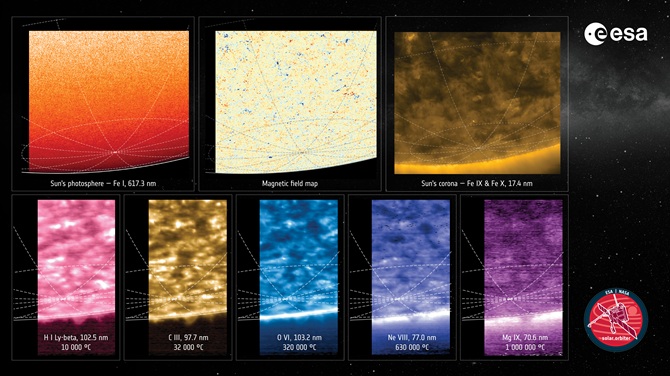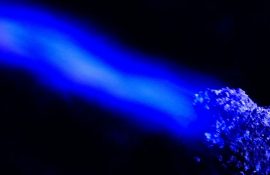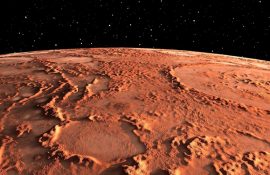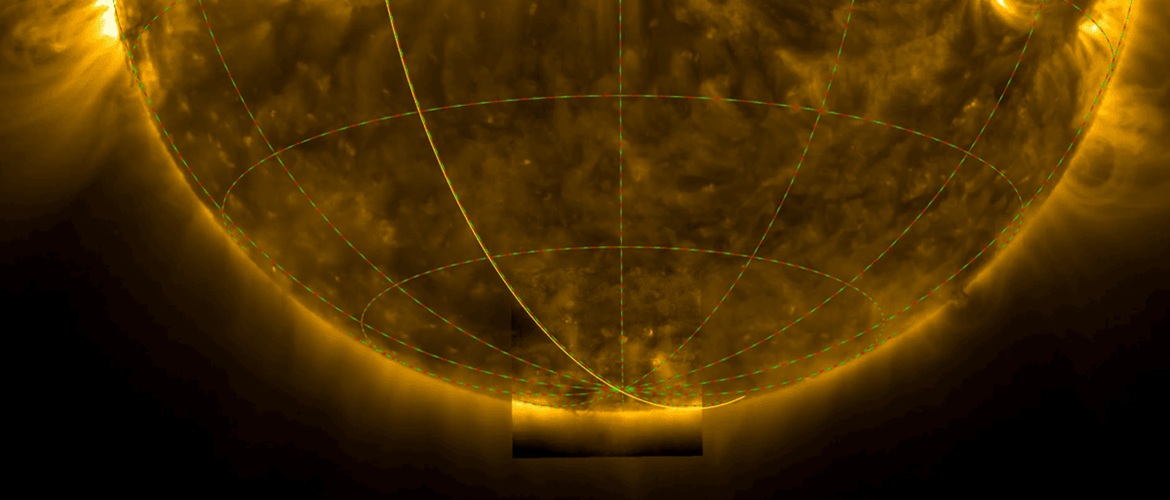The Solar Orbiter spacecraft managed to take a photo of the Sun’s poles not from the equator, but from an inclined orbit. On March 16-17, it recorded the south pole at an angle of 15°, and on March 23, it reached an angle of 17°. Previously, such pictures were taken from the equatorial angle.
The device, having inclined its orbit, showed the Sun from a new angle for the first time. This made it possible to directly see its south pole. The first images were obtained by three Solar Orbiter instruments: PHI, EUI, and SPICE. With their help, it was possible to study the magnetic field, temperature, and dynamics of matter in the upper layers of our star.

The pictures show a disordered structure of the magnetic field at the south pole, which indicates the onset of the solar maximum. During such a period, the Sun’s magnetic field changes, so within one pole, areas with opposite polarity can simultaneously exist.
Also, the SPICE instrument measured the speed of ions in the transition layer of the Sun’s atmosphere for the first time. Thanks to this, it is possible to apply the Doppler measurement method, which allows recording the speed of ejection of matter from the surface of a star.
Recall that the Webb telescope created the largest map of the Universe.
To be continued…







Only registered users can leave comments